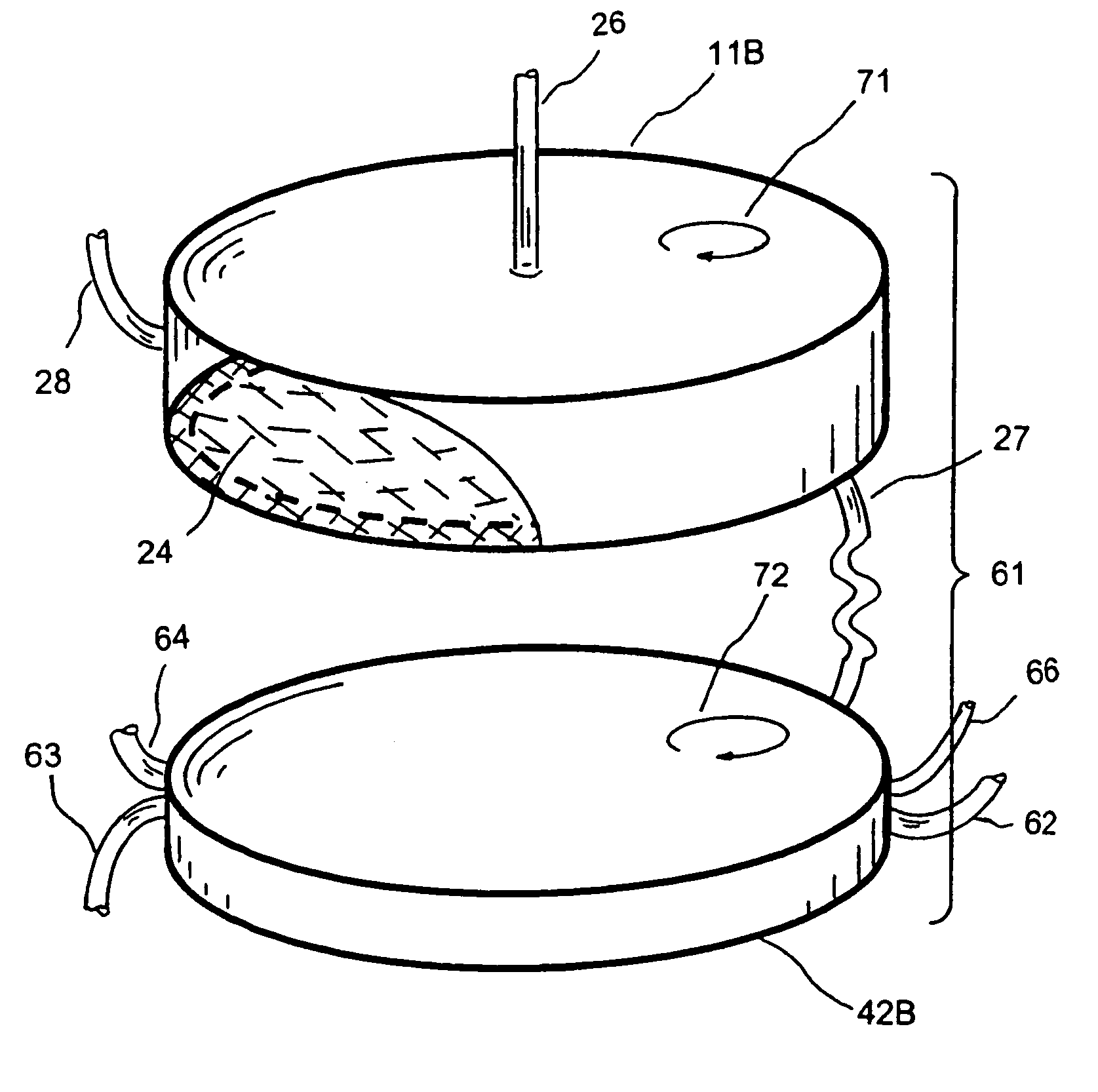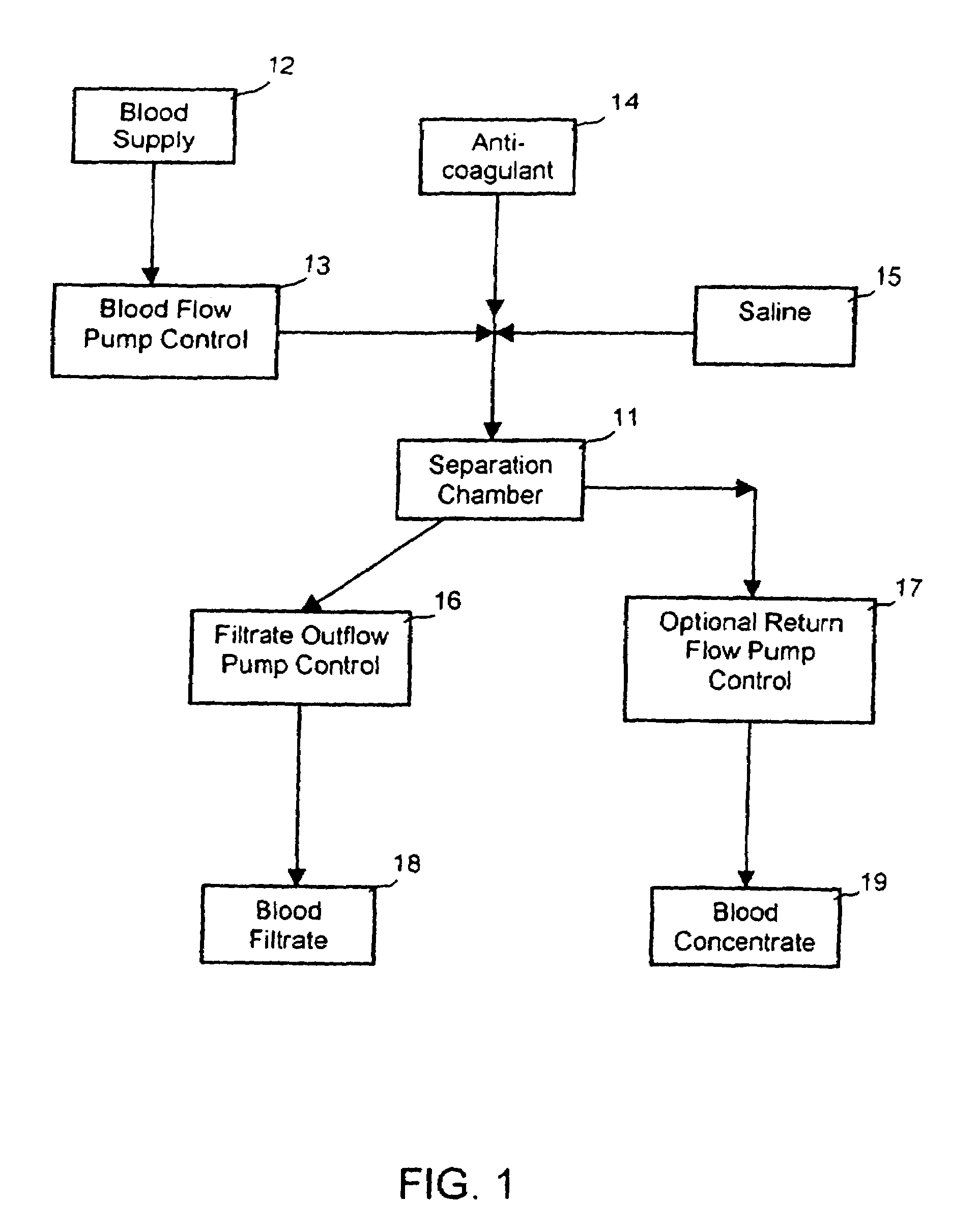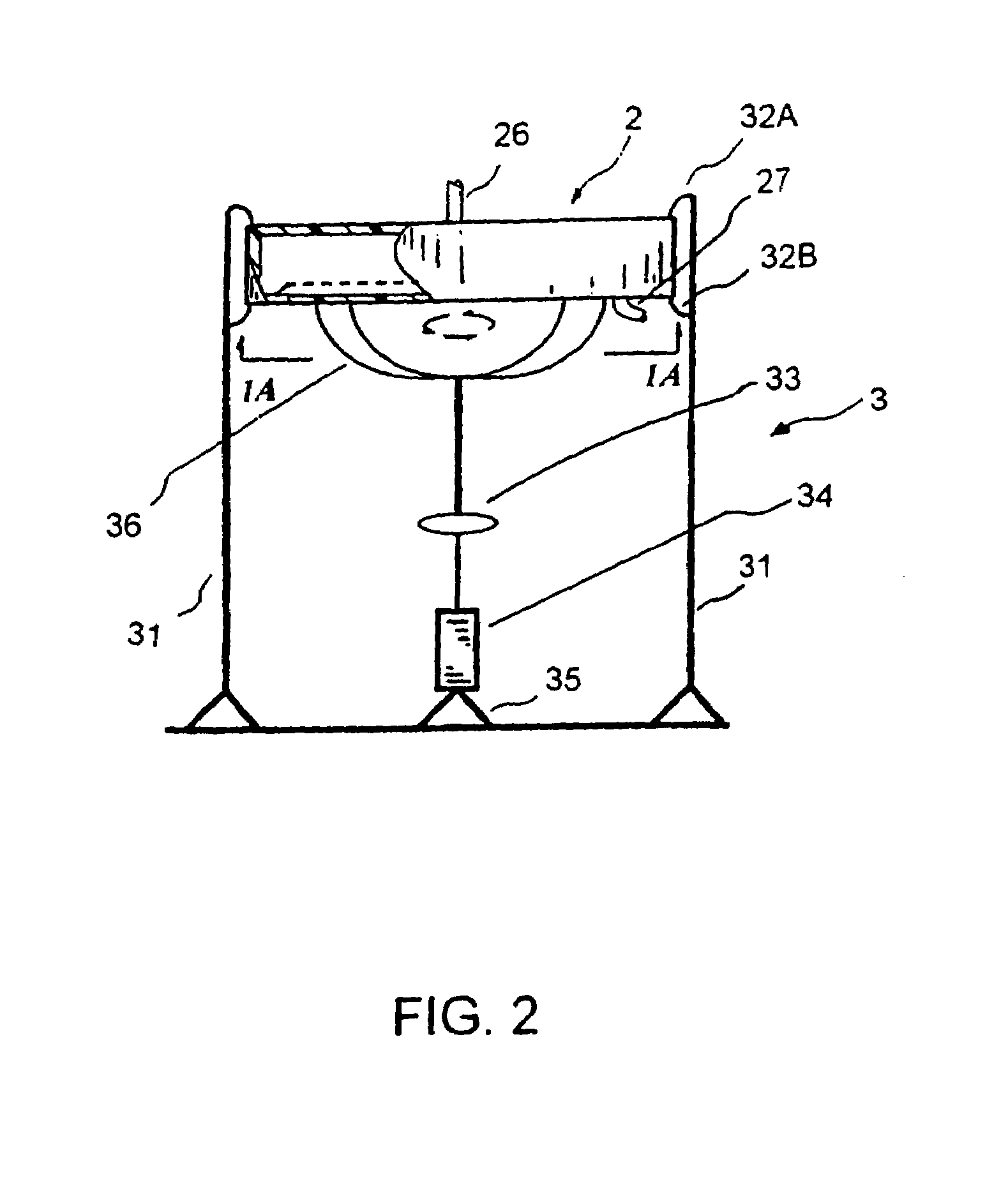Extracorporeal pathogen reduction system
a technology of extracorporeal pathogens and reduction systems, applied in the field of medical devices and methods, can solve the problems of inability to control flow rates fairly closely, inability to separate blood into cellular components and plasma fractions, and inability to remove cells, etc., to achieve the effect of reducing the pathogen burden of a patient and reducing the pathogen burden
- Summary
- Abstract
- Description
- Claims
- Application Information
AI Technical Summary
Benefits of technology
Problems solved by technology
Method used
Image
Examples
example no.1
EXAMPLE NO. 1
Therapeutic Applications
[0112]An HIV-1 patient has HIV-1 viral loads of 107 copies / mL and HCV viral loads of 106 copies / mL. The patient is placed in the EPIS. This EPIS applies the PRT (Pathogen Reduction Technology) to inactivate known and unknown pathogens. The patient's blood was drawn from the left arm and filtered through a DC2000 device or other blood separation systems to separate the plasma from concentrated blood. The concentrated blood was re-circulated back to the body. The plasma is collected at a speed of 10 to 50 mL per minute. The plasma is directed into a plastic tubing and flow at a speed of 5 cm / min. A small entry port sits in the front end of the tubing can be opened to add anti-infectives. A small device creating a small turbulence when the plasma flows through it to create a mixing. The length of the tubing is configured and adjusted to accommodate the length of incubation time required. Once the treatment is complete, the plasma is returned back to...
PUM
 Login to View More
Login to View More Abstract
Description
Claims
Application Information
 Login to View More
Login to View More - R&D
- Intellectual Property
- Life Sciences
- Materials
- Tech Scout
- Unparalleled Data Quality
- Higher Quality Content
- 60% Fewer Hallucinations
Browse by: Latest US Patents, China's latest patents, Technical Efficacy Thesaurus, Application Domain, Technology Topic, Popular Technical Reports.
© 2025 PatSnap. All rights reserved.Legal|Privacy policy|Modern Slavery Act Transparency Statement|Sitemap|About US| Contact US: help@patsnap.com



